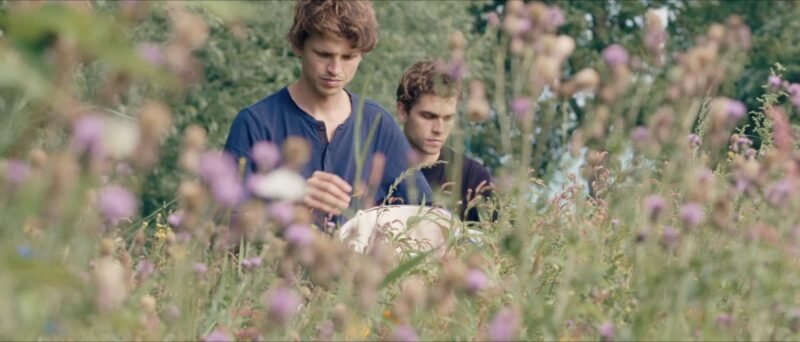Trend 3: Paint The City!
Paint has proven to be a great way to spice up boring, ugly and unsafe cities. Over the last years we’ve seen a remarkably high number of urban color injections at a remarkably wide range of places in the world — from bus stations in Bratislava to favelas in Rio de Janeiro. Many of these projects turn out to have a maximum effect at minimum expense. In fact, several urban paint jobs have even lead to landmark-sized icons that attract loads of tourists to places they never thought of visiting before.

We think that it started around 2000 in Tirana, capital of Albania. The first thing Mayor and artist Edi Rama did when he got elected was to order paint and wipe away the city’s communist flavor. According to the New Yorker, “he blasted the facades of Tirana’s gray Stalinist apartment blocks with color-riotous, Caribbean color-turning buildings into patchworks of blues, greens, oranges, purples, yellows, and reds, and the city itself into something close to a modern-masters sampler”. The project became such a success that Rama won the prestigious World Mayor Award in 2004.

In 2006 Jeroen Koolhaas and Dre Uhrhahn started Favela Painting. The two artists from Amsterdam came up with the idea to bring outrageous works of art to unexpected places, starting with painting enormous murals in the slums of Brazil together with the local youth. Their first community-driven intervention, which took place in Vila Cruzeiro, Rio de Janeiro’s most notorious slum, became a worldwide hit as well as a point of pride in the community and throughout Rio. After several other artworks Koolhaas and Uhrhahn announced their plans to paint an entire hillside favela in the center of Rio. (Click here to donate to the ‘O Morro’ project and make this fantastic idea come true.)

Several urban paint jobs have shown that using only one color isn’t that bad at all. Launched in August, 2011, the Green Square project is a colorful 1,000 square meters intervention by Sadovský Architects that aims to spice up an ugly bus station in the Slovakian capital Bratislava. In the Netherlands, artist Henk Hofstra painted a 1-kilometer long street in Drachten blue to symbolize a river. Florentijn Hofman created a similar artwork in Schiedam, a suburb of Rotterdam, where he painted an entire street yellow.

To promote the latest Smurfs movie, an entire South Spanish village was painted blue last year. The paint job attracted so many tourists to Juzcar that inhabitants of the town voted to keep the façades of the buildings blue forever. According to the The Independent, “an estimated 80,000 followers of ‘Los Pitufos’, as the Smurfs are known in Spanish, have made the trek to the remote village high in Malaga’s sierras. The village has eagerly embraced its new role, holding events such as a Smurf moonlight fun run, Smurf painting competitions and permanently running Smurf trade fairs. There are even Smurf-themed weddings to keep fans of the squeaky little blue folk coming”. Smurbanism works!

With the community-driven project Couleurs Carolo, the Dutch paint company AkzoNobel aims to support the Belgian city of Charleroi to become a bit more colorful. AkzoNobel invested loads of money to add some color to the city that has been ‘officially’ declared the most ugly town in the world. Under artistic supervision of the local architect Georgios Maillis, six strategic spots in the city were injected with colorful patterns, including apartment blocks, a viaduct, corporate buildings and a water tower.

Especially the last two urban paint projects are interesting from an ‘urbanism is marketing’ perspective. Brand exposure tends to go beyond ordinary advertising these days — it has become an integral part of urbanism and urban planning. What characterizes the paint jobs in Juzcar and Charleroi is that they are not a local government’s initiative to promote a city, as it was in Tirana, nor an individual artist’s idea, like in Brazil, but projects initiated by Sony and AkzoNobel — huge international companies. At the same time, all these urban color injections show that urban regeneration doesn’t need to be expensive, which is pretty relevant in these harsh economic times.
This article belongs to the Top 10 Trends For 2012. Reflecting on what we’ve written in 2011 and looking into the new year, we’ve compiled a fresh list of remarkable trends that we consider to be important for our cities in 2012.
On 2 June, Amsterdam’s Pakhuis de Zwijger sets the stage for BrandFundCity, a (free) event featuring inspiring international experts, interviews, and insights from a two-year research on brand urbanism.



